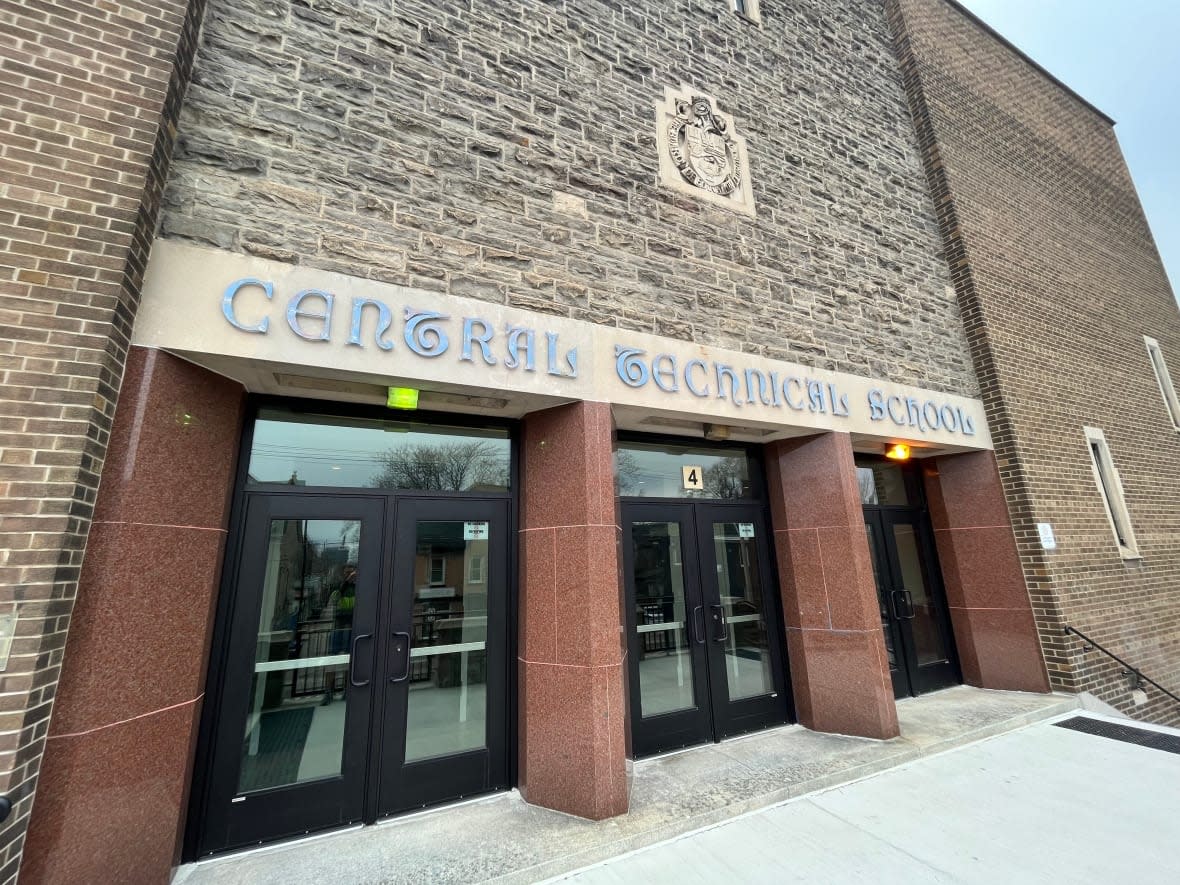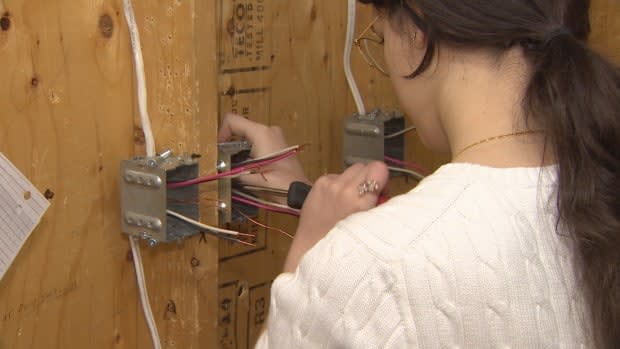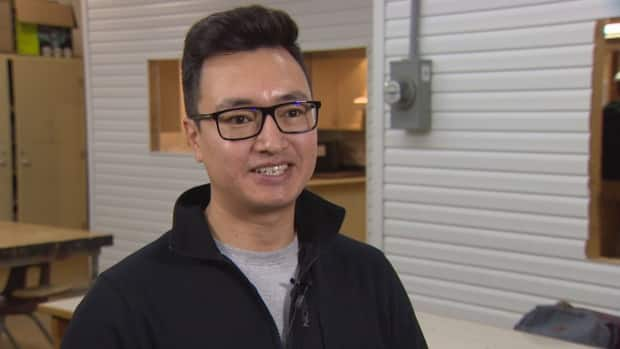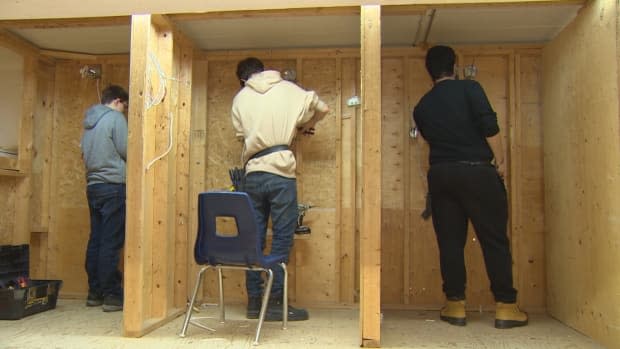Ontario students need more pathways to enter skilled trades, say industry experts

Ontario has tens of thousands of unfilled jobs in construction — a problem experts say it will have to overcome to have any chance of fulfilling the government's pledge to get 1.5 million homes built over the next decade.
While the pandemic played a role in the worker exodus, most in the construction sector point to one thing: older trade workers are retiring and not enough young people want their jobs.
"For far too long in Ontario, governments of all different stripes have told young people that the only way to be successful in life is by going to university, but that's simply not the truth," said Monte McNaughton, the province's labour minister.
Ontario needs that next generation of workers. The labour shortage is not only costing the province billions, but if Ontario can't get homes built, housing costs will rise even more than they already have.
In one Toronto school, you would never know there was such a problem getting students interested in skilled trades.
"I like it because it kind of shows you everything around you — how the world is built," said Daniel Orzechowski during a break from wiring panels at Toronto's Central Technical School near Bathurst and Bloor streets.
He's in a program called the Specialized Ontario Youth Apprenticeship Program (OYAP), which gives students a feel for the trades.
He and a dozen other students took a break from their class at Central Tech to speak to CBC News Toronto about why they like the program.
"It definitely makes you feel like there's a lot of different opportunities, a lot of different routes you can go down," said student Maya Hamand, She said a lot of her friends just went to university because it's what they "were told to do."
'A guiding hand' for students interested in trades
Matt Bradley, the program's co-ordinator at the Toronto District School Board (TDSB), says students learn valuable skills in the classroom that prepare them for apprenticeships before they're given on-site placements with Ontario construction firms.
Programs like these are important, says Bradley, because employers have grown increasingly reticent to take on new apprentices, often citing the financial demand of training younger workers without enough government funding or incentive.
"Employers often want to hire someone that isn't completely green," said Bradley.
"They want someone with a little bit of experience."

He says Specialized OYAP helps by giving students real-life trades experience while they earn credits toward graduation.
"It's like a guiding hand in teaching you what to do," said student Muaaz Abowath.
Many students participating in OYAP go on to start their apprenticeships in one of the trades they had exposure to in the program, Bradley says.
Program needs more teachers
But many experts say if Ontario is going to get more students into trades, it needs more teachers with skilled-trade experience.
"This is a valid concern; I've heard it across the province as well," acknowledged McNaughton in an exclusive interview with CBC Toronto.
"I can tell you [Ontario Education] Minister Lecce is working on this as we speak, and there should be more word on this."
Lecce says the government is exploring ways to get individuals with experience in the private sector into classroom teaching positions.
"Part of increasing interest means we have to have an increase of staff to reflect the needs and demands of young people," Lecce told CBC Toronto.
Bradley also says the program needs better community partners and engagement from potential employers, saying they often complain they're not getting the "best" students.
"They're waiting for students to do everything first before starting an apprenticeship."

One former student, Nazif Tahiri, is an employer himself. He finished the program 10 years ago and now runs an electrical company with six employees.
"This school basically prepared me for the actual life as an electrician," said Tahiri.
He says he now often comes back to Central Tech for new hires.
While the program is available to all Ontario students, Tahiri told CBC Toronto he had to switch to Central Tech in his last year of high school to complete it, saying not all schools are set up for the program.
'Apprenticeship is post-secondary education'
It comes as Ontario invests hundreds of millions in getting students to consider skilled trades in hopes of turning the tide on the province's labour woes.
Bradley says going into trades not only leads to lucrative careers that often outperform those requiring a university education, but that the province need to shift the culture around going into the trades.
"Apprenticeship is post-secondary education, and it should be valued in the same way that university and college are," he said.
But Ontario doesn't just need young people, many in the industry say. It needs women and other typically underrepresented groups.

"We need to be more diverse," said Lyall, adding that women only represent four to five per cent of the construction workforce.
But he says strides have been made towards this goal. The Ontario government has made investments in attracting young women, with McNaughton saying the number seeking apprenticeships has increased by 29 per cent year over year.
Programs like The Hammer Heads assist Indigenous and other underrepresented youth by paving a way for them to apprenticeship opportunities that might not otherwise be accessible.
Nevertheless, Lyall still says the province has its work cut out for it.
"We've really got to fix our talent development process and serve kids better, because we're failing tens of thousands of young kids every year."


